|
The Royal Naval Commandos.
The Beachhead
Commandos
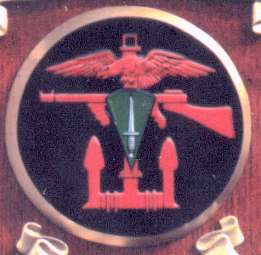
Background
The Royal Naval Commandos were informally known as the Beachhead Commandos.
Their primary task was to control the movement of men, vehicles and supplies
through the landing beaches during amphibious landings. The avoidance
of bottlenecks and delays was vital to maintain the flow of reinforcements,
transport, armaments and supplies, which gave the Beach Commandos a pivotal role in the supply chain. This
account was written by
S H Kipling.
The
earliest attempts to exercise control over the landing beaches were undertaken by the Royal Navy
crews of
landing craft, but these proved to be inadequate. As a result, specialized 'beach parties' were
formed, trained and first used on Operation Ironclad to capture the port of
Diego Suarez at the northern tip of Madagascar between 5th and 7th May, l942.
This proved so successful that the Royal Naval Commandos (RNC), sometimes known as 'Beachhead
Commandos,' were formed.
Their duties included: landing in or ahead of the first wave of
assault troops to clear the beaches, to mark the limits
of the beachhead and to consolidate the beachhead, clearing Allied personnel and equipment from
the beachhead expeditiously, helping to moor landing craft correctly, removing mines and underwater
obstructions and taping the safe passage routes off the beaches for the wounded, informing subsequent waves of important intelligence about the defences and strengths
of the enemy and advising how to exploit the enemy's weaknesses, setting up important ammunition and supply
dumps, supporting a wide variety of troops with
any initial advance inland, supervising enemy prisoners of war and generally being available to tackle any task and
to act
as a rearguard during any withdrawals.
The first RNCs were formed during the spring of
l942 from general service, reservists and 'hostilities only' officers and
ratings. Each Commando unit came under the command of a Lieutenant-Commander or
Commander and comprised three sections e.g. K1, K2, and K3. Each section
comprised two officers, a
Beach Master (BM) and Assistant Beach Master (ABM), a Petty Officer and seventeen other ratings
of varying rank. Acting rank could be found from time to time. Later, in the
light of experience, the structure of the Commandos was changed to ten
officers and sixty-five other ranks divided into three
parties of twenty-five men each - one BM, three ABMs and twenty-two other ranks.
They were responsible for a particular section of beach
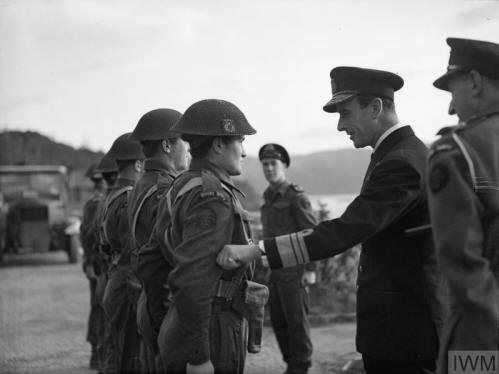 on a large invasion.
Each RN Commando unit could, occasionally, come
under the command of a Principal Beach Master (PBM) with the rank of
Captain but this usually only occurred on larger invasions, where each unit was
spread over many miles. on a large invasion.
Each RN Commando unit could, occasionally, come
under the command of a Principal Beach Master (PBM) with the rank of
Captain but this usually only occurred on larger invasions, where each unit was
spread over many miles.
[Photo;
Vice Admiral Lord Louis Mountbatten inspecting the battledress of a rating in a
Naval Beach Commando. © IWM (A 15105)].
Dieppe
In August, l942, members of the RNCs (C and D) took part in
Operation Jubilee, the Dieppe raid, with a BM and beach
party assigned to each of the beaches. Some could not reach their assigned beach
due to heavy gunfire and they suffered very heavy casualties, with many others
becoming prisoners of war. However, they would go on to play other roles within
the heart of Germany itself, one such being the famous account of 'Albert RN'... but that's another story.
The beach landings at Dieppe were chaotic and
adversely affected by poor intelligence, unsuitable beach conditions for landing
tanks and a well prepared and equipped enemy. Under these circumstances there
was little opportunity to properly implement the principles and practices of
beach control but the need for Combined Operations and within that
the vital role of the RN Beach Parties in any future amphibious landings, large
and small, was self evident. The specialized training needed by the Beach
Parties would in future be provided at a school established at Ardentinny in the
Clyde estuary in Scotland.
 Training Training
The school at Ardentinny was
a shore based establishment called HMS
Armadillo, which accommodated between 500 and 600 men.
It was located on the shores of Loch Long, which was as close
to a Norwegian Fjord as Scotland could provide. By road it was a very remote
location but by ferry from nearby Dunoon, it was much more accessible to Glasgow
via Greenock.
[Map courtesy of Google].
Officers and ratings
attended many of the courses together, which was a most unusual arrangement for the times. Good use was made of Loch Long for amphibious landing drills, reconnaissance and
specialised beach skills. Other training included weapons usage, rock
climbing, assault courses, embarkation and debarkation using various types of
landing craft under battle conditions, route marches and field survival.
Many of
these skills were honed at the Commando training school at
Achnacarry, nearly 100 miles to the north
near
the famous Commando Memorial, which
has stood at Spean Bridge since the early 1950s.
The training was organised by the famous Army Commando Officer,
Colonel Vaughan. Despite its arduous nature, very few men were RTU'd
(returned to unit) because they couldn't complete the course.... nobody wanted their service
 record
noted with such an entry. The RNCs were expected to pass the Commando training
course and receive their much coveted green beret along with the famous
Fairbairn-Sykes
(F-S) dagger from Colonel Vaughan at special
parades. It is said that their time spent at Achnacarry was responsible for their
new motto, IN PRIMO EXULTO - first in last out. record
noted with such an entry. The RNCs were expected to pass the Commando training
course and receive their much coveted green beret along with the famous
Fairbairn-Sykes
(F-S) dagger from Colonel Vaughan at special
parades. It is said that their time spent at Achnacarry was responsible for their
new motto, IN PRIMO EXULTO - first in last out.
[Images; Christmas card sent home
from the Mediterranean by Ken Oakley of Fox Group to his mother in 1943].
There was additional training for those selected
for overseas operations and other specialised duties such as;
-
training at
The Middle East Combined Training Centre
at Kabret, near the Suez Canal,
for service
in the Middle East,
-
training at the Jungle Battle School at Chittagong
for service in South East Asia,
-
parachute training (many would later wear the SAS/SBS wings),
-
underwater swimming to qualify as 'frogmen'.
All of the skills acquired during the extensive
training period were to prove invaluable in subsequent operations. The
experience gained at Dieppe was instrumental in shaping the then future expanded
role of the RNC.
 North Africa North Africa
Once formed, RNC units were assigned letters rather than numbers
and by the
end of l943, twenty-two units had been formed. During Operation Torch in late
l942, four hundred and ten RNCs proved themselves in the first major
Anglo-American amphibious operation of the war. Four augmented units took part - C
(reformed after the heavy losses incurred at Dieppe), E, F, G and parts of H and J,
under the auspices of the three task forces: the Western Task Force,
Casablanca; the Central Task Force,
Oran and the Eastern Task Force.
The RNCs landed with the first assault elements
and took immediate charge of the beaches. After first eliminating snipers, they
dug slit trenches for protection and set up Lewis guns for use against low
flying enemy aircraft. The Commandos' major task was to guide ashore 29,000
troops, 2,400 vehicles and l4,000 tons of supplies on three different beaches.
Those RNCs working with the American assault troops wore American uniforms since
the Vichy French Troops in French occupied territories in North Africa were
very suspicious of the British. Overall the RNCs performed well during
Operation Torch, despite some difficulties in controlling incoming landing
craft.
Sicily & Italy
 The next major assignment for the RNCs was
Operation Husky, the invasion of Sicily. This involved more than 2,000 ships and landing craft. The
units involved were C, E, F, G, K, M and N assigned to the Eastern Task Force
(British) to cover twenty-seven landing beaches. Getting the Assault troops ashore
with their equipment and supplies was just the beginning for the RNCs. The next major assignment for the RNCs was
Operation Husky, the invasion of Sicily. This involved more than 2,000 ships and landing craft. The
units involved were C, E, F, G, K, M and N assigned to the Eastern Task Force
(British) to cover twenty-seven landing beaches. Getting the Assault troops ashore
with their equipment and supplies was just the beginning for the RNCs.
[Photo of No 14 Beach Group in 1942 and kit list for "C"
Commando courtesy of Ron Giles
whose father
Ronald
Victor Giles is top right. Other names available are: 2nd row from front - Sgt.
G C Hillman, BG; Petty Officer H G Ord, RNVR; Sgt A Bagnall BG; Lieut J Palmer,
RNVR, Beach Master; Capt T A Lines, Queens, Commanding; Lieut D Durham, RNVR,
Beach Master; Sgt E O Strefford, BG; Petty Officer A E Burton, RNVR; Front Row;
Lieut A G Dunbar, RA, AMLO; Sgt G Kidd, BG; Lieut R I Walton, P C, AMLO].
They
usually had to work the beaches for weeks beyond the initial landings, directing
in the supplies and reinforcements and guiding out the wounded and prisoners of
war. As a distraction from their normal routine, the RNCs took the Island of Monte Cristo, on
which an enemy radio station was located. It was capable of plotting Allied shipping in the area
and reporting back to the mainland. Also, D party took part in the capture of the Island of
Pantelleria in
June l943.
In September of l943, RNCs
(C, G, H, K, M, N and O parties) accompanied the Army assault troops and
Royal Marine Commandos when the Allies landed in Italy.
Later during the advance up the Italian
coast they helped
open up anchorages. At both the Salerno and Anzio landings, the RNCs neutralised
minefields prior to the arrival of waiting landing craft.
At Anzio, they used their F-S daggers to probe for
wood encased mines, which could not be located by the Royal Engineers' metal detectors. Sand bars
offshore also created great difficulty during this landing but the RNC
kept the beachhead functioning throughout the initial landings and
for months afterwards, despite almost constant
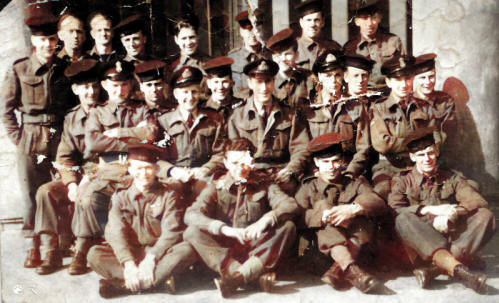 German shelling. As the advance
moved further up the Italian mainland, they were given two additional roles - the
recovery of escaped Allied prisoners of war along the Adriatic coastline and
protecting suspected war criminals from the retribution of local inhabitants.
This was necessary in
order to hand them over
for Allied interrogation and preparation for war crime trials once the war was
over. German shelling. As the advance
moved further up the Italian mainland, they were given two additional roles - the
recovery of escaped Allied prisoners of war along the Adriatic coastline and
protecting suspected war criminals from the retribution of local inhabitants.
This was necessary in
order to hand them over
for Allied interrogation and preparation for war crime trials once the war was
over.
[Colourised photo from Ron
Giles of C1
Naval Commando, Padstow, Cornwall, 1942].
In early June l944, tragedy struck the RNC while
engaged in
Operation
Brassard, the invasion and capture of the Island
of Elba, involving A and O parties. Two sub-sections from each had undertaken
special rehearsals to carry out their assigned tasks in this important landing.
However, no amount of training and preparations could have overcome the enemy's
coastal defences, inland batteries and gun sites.
It was not until June 19, l944, that the island's garrison finally surrendered
and Elba passed into Allied hands. The casualties sustained by the RNC were
heavy and the operation was nicknamed 'bloody little sideshow'. The parties
making up A and O suffered the greatest casualties but O (3) was practically wiped out, losing
2 officers, 2 petty officers, l leading seaman and l3 ratings, while A
party lost 2 officers and l8 men. The remnants of these parties were
eventually returned to the United Kingdom.
Yugoslavia and Greece
Some of the RNCs crossed into Yugoslavia or
down to the Greek Islands to assist operations to
force the Germans to withdraw from these areas. Those who remained in Italy found themselves up against a
new enemy - those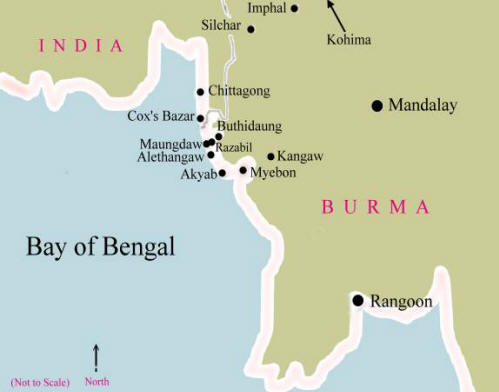 unfortunates who were conscripted from the German
occupied countries.
They were tough fighters and at times suicidal because they had nothing to lose. If they did not fight they, or their families, would be shot.
Even if they were captured, on return to their homelands after the war they could
have been shot as traitors. The
Germans used them mainly against Allied Special Forces, who were also known for
their toughness. The RNCs reached northern Italy at the end of the war just as
the Allies were about to launch the invasion of Austria.
Instead, as the war came to an end in May 1945, they returned to southern Italy
and back to England by sea. unfortunates who were conscripted from the German
occupied countries.
They were tough fighters and at times suicidal because they had nothing to lose. If they did not fight they, or their families, would be shot.
Even if they were captured, on return to their homelands after the war they could
have been shot as traitors. The
Germans used them mainly against Allied Special Forces, who were also known for
their toughness. The RNCs reached northern Italy at the end of the war just as
the Allies were about to launch the invasion of Austria.
Instead, as the war came to an end in May 1945, they returned to southern Italy
and back to England by sea.
Far East
RNCs who specialised in jungle warfare at the training school at Chittagong included H party, which took part in the landings on the Arakan coast.
These operations commenced with Operation Screwdriver in February 1944, followed by Srewdriver II. C and E parties were active in Malaya in 1945 and helped prevent
the Japanese carrying the war into India.
 Normandy Normandy
The largest RNC operation of the war was Neptune,
the naval portion of Operation Overlord. Eight parties F, J, L, P, Q, R, S, T and W
(W mostly Canadians)
were assigned and trained for what would be
the largest amphibious invasion force in human
history. RNCs
were, as usual, in the first wave to
assist with thousands of landing craft repeatedly ferrying troops,
equipment and supplies to the landing beaches over many weeks.
[Photo;
RN Commando from FOX group prior to D-Day].
They suffered heavy casualties in Normandy. On some
beaches they dug in to fight off counter attacks and their Commando training
proved very effective in overpowering the German troops
especially in close combat... a task many found less difficult than
dealing with the congestion on the beaches! Wrecked landing craft and vehicles
blocking beach exits were a
constant problem, while the Germans were still active
in the beach areas.
Despite these difficulties they kept the beaches clear
of obstacles and organised the
exits to keep the supply lines moving. Most RNCs
were present in
Normandy for at least six weeks, when some helped to salvage sunken landing
craft and secure Mulberry Harbours and Phoenix Piers
in position.
Walcheren and the Rhine
The Normandy invasion was the high point of RNC operations but hostilities for them
were not yet over. In early November 1944, they took part in the capture
of the Dutch island of Walcheren,
whose garrison of 10,000 men and heavy guns was preventing
the Allies from using the inland port of Antwerp to supply the Allied armies as
they moved towards Berlin.
L & M parties also took part
in the crossing of the Rhine at Arnhem, although
the were not part of the ill-fated
airborne assault. It was later decided to
send the RNCs to the Pacific to take part in the invasion of the
Japanese home islands. C, E, H, J, M, N, R and V parties were
selected for this task.
They were to join Force X and Y from the South East Asia Command (SEAC) but the dropping of the atomic
bombs on Hiroshima and Nagasaki brought a speedy conclusion to hostilities and
the RN Commandos were not needed.
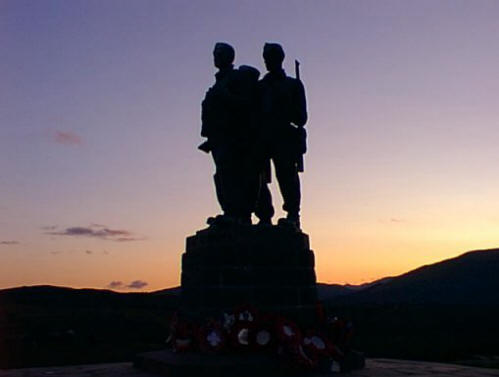 The
End of the War The
End of the War
The RNCs went through the same rigorous
training as the Army and Marine Commandos with the addition
of
training for their beach management role. The
early stages of an assault were extremely hazardous until the enemy troops, defending the beach area,
had been subdued. At the end of WW2, the Beachhead Commandos ceased to exist but the
lessons learned did not go unnoticed
as their roles were later revived and modernised for
post WW2 operations.
[Photo; the Commando Memorial, Spean Bridge, Scotland, courtesy of Stephen Eblet].
Honours and awards given to members of the Royal Naval Commando, both during
and after the war, are difficult to identify. The London Gazette entries do not
normally
identify the recipients as serving in the RNC, only doing so when an individual
citation comes to light. However, every member who served knows of his own
courage, humour and tragedy in those dark war years.
Postscript
Other specialist R N Assault Landing Parties also served in every assault landing from Dieppe to the
crossing of the Rhine and they deserve mention here. These units were the Beach Signal Sections; Landing Craft Obstacle Clearance Units;
Combined
Operations Pilotage Parties; the Special Boat Squadron; the Forward Observation
Bombardment units and, not least, members of the WRNS, who served in support of
them.
On 23 May, l987 a Memorial Plaque was dedicated
at Ardentinny
''In
memory of the Officers and Men of the Beach Parties and Royal Navy Commandos who
gave their lives for their country during the Second World War l939-45.'
'Then they are glad, because they are at rest and so he bringeth them unto
the haven where they should be.'
Details of the Author's unit RNBC 'NAN'
The author's unit was formed at HMS Armadillo in February, l943 under the
command of Lieutenant Commander MV Redshaw, RNVR. On completion of training
the unit proceeded to Foliot (camp at Plymouth, now Marine Commando
Barracks) and Achnacarry, the Army Commando Training Centre, before being
attached to Force V, with whom the unit sailed for Sicily on 29 June, l943.
After Operation Husky, 'Nan' was stationed at Bougie before returning to
Sicily to take part at the crossing from Messina to Reggio. In October, l943
the unit moved to HMS Saunders at Kabret, where it remained until it
returned in the cruiser HMS Phoebe to Italy in time for the Anzio Landings,
operation Shingle, on 22 January l944, at which 'Nan' company sustained
several casualties. After a period in Corsica and Naples, the unit moved to
the Adriatic in May, l944, where it saw extensive service in the forward
port areas with the 8th Army. 'Nan' unit was disbanded at
HMS Dundonald
in November l945.
The Principle Beach Masters RNBC 'NAN'
were; Act. Commander PWF Stubbs, DSC, RN, April-September l943; Lieutenant J
Russell, DSC, RN September l943-February l944; Lieutenant-Commander TJ Turton
RNVR May-June l945; Lieutenant A Varley, RNVR June-November l945.
Other Information

Subject. RN
(Beach) Commandos. No.3 R.N. Commandos were billeted in the town of Hythe prior to
embarkation for Normandy from Hythe Pier.
Location. The Memorial Stone is situated in
a small park close to Hythe Pier.
Other Info.
The stone was erected
by the town's folk to commemorate the event.
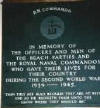
Subject.
RN (Beach) Commandos. Location.
The
memorial plaques on the left are situated in Ardentinny Church on Loch Long
in Scotland close to where the RN Commandos training base at HMS Armadillo was located.
Other Information.
The primary task of the RN Commandos was to control the movement of men,
vehicles and supplies through the landing beaches during major amphibious
landings. The avoidance of bottlenecks and delays gave them a pivotal role
in the supply chain.

 Subject.
RN (Beach) Commandos.
Location. The memorial cairn is near the village of Ardentinny on the shore of Loch Long in Scotland, where
the RN Commandos training base at HMS Armadillo was located.
Other Information.
On the 15th of February, 2001, Ken Oakley, Chairman of the RN Commando
Association, wrote to Tommy Hamilton
"Ted
Hinchcliffe made the memorial stone (crossed the bar Jan 01). He was very
proud Subject.
RN (Beach) Commandos.
Location. The memorial cairn is near the village of Ardentinny on the shore of Loch Long in Scotland, where
the RN Commandos training base at HMS Armadillo was located.
Other Information.
On the 15th of February, 2001, Ken Oakley, Chairman of the RN Commando
Association, wrote to Tommy Hamilton
"Ted
Hinchcliffe made the memorial stone (crossed the bar Jan 01). He was very
proud
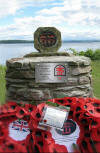 of making it out of Yorkshire stone". In the same letter,
Ken asked
Tommy if he would paint in the letters, which he did. His son, David,
subsequently refreshed the lettering. of making it out of Yorkshire stone". In the same letter,
Ken asked
Tommy if he would paint in the letters, which he did. His son, David,
subsequently refreshed the lettering.
The memorial stone was originally placed
outside
the front door of the old Forestry Commission (FC) office. When the
building was demolished, Ian Adams of the FC moved the stone to a safe
location about 30 metres away.
The
cairn, seen in the photos above, was built by FC workers Stephen Cooper
and Ben Blowers in time for Remembrance Sunday, 2013.
 The
people of Ardentinny keep the area around the memorial stone
tidy. Flowers and bulbs in pots are often placed near the stone as an
act of remembrance. [Photos courtesy of Tony
Rodaway]. The
people of Ardentinny keep the area around the memorial stone
tidy. Flowers and bulbs in pots are often placed near the stone as an
act of remembrance. [Photos courtesy of Tony
Rodaway].
Bob
Hinchcliffe, son of Ted (mentioned above) wrote in Nov 2021; "My
wife discovered that my father had carved the Ardentinny memorial
stone from Yorkshire grit many years ago and presented it to the
then Combined Operations Association. We visited Ardentinny on
Remembrance Sunday to pay our respects to my father and his RN
Commando comrades who trained there in the early 1940s. The
memorial stone sits proudly and securely on top of a cairn
overlooking Ardentinny Beach. Local children have added painted
beach pebbles to the cairn.
A local
couple, who visit the memorial each year, also attended at 11.00.
They run a local history group and were very knowledgeable about
RN Commando activities and the history of the local training base.
We then took
a walk along the beach and, on our return, we found a small toy
hedgehog sitting on top of the memorial stone. It was such a sweet
heart-warming gesture on a special day of remembrance.
Kind
regards,
Bob.
Further
Reading
There are around 300 books listed on our 'Combined Operations Books' page which can be
purchased on-line from the Advanced Book Exchange (ABE) whose search banner
checks the shelves of thousands of book shops world-wide. Type in or copy and
paste the title of your choice or use the 'keyword' box for book suggestions.
There's no obligation to buy, no registration and no passwords. Click
'Books' for more information.
Beachhead Assault by David Lee. The Story of the Royal Naval
Commandos in WW2. Foreword by Tony Parsons. Published By Greenhill Books
in October 2004.
The Beachhead Commandos by a Cecil Hampshire.
Published by William Kimber & Co Ltd in 1983.
Re-enactment Group SE
England -
https://www.rnbcr.co.uk
Correspondence
Able Seaman
John Couch, (Jack
or Taffy), JX363389
- Solving a Family Mystery
Dear Geoff
When I
first emailed you, 7 months ago, I knew very little about my father’s war
service other than a few vague childhood memories. I harboured regrets that
I had missed the opportunity to learn more from him, which would have
allowed me to recount and recognise his contribution to the war effort at
his funeral service in 1994, attended by his family and friends.
Although I had been told he had served as a Naval Commando, I had no
evidence of this so I recently set myself the task to find out what
information was held about him in official records, family documents and
recollections and websites such as yours and the Commando Veterans
Association.
As the
many snippets of information emerged from these disparate sources, so did a
confusing picture. What was clear, from his service medals, was service in
Italy; but what was he doing there? His attendance at Combined Operations
training bases in west/central Scotland, suggested some connection with
amphibious landing craft, possibly as a crew member but equally possibly as
a commando. There was one entry on his record that was a mystery and not
included in any military abbreviations – N2 B.C.
There
had been some family recollection of a knife. Was this the famous Commando
“Fairbairn-Sykes” Fighting Knife? Had he really been a Commando? If he was
also involved with landing craft, could the “B” mean beach. Similar thoughts
emerged from a family member and finally the truth began to dawn. He had
been a Royal Naval Beach Commando in N(Nan)2 serving in the Combined
Operations Command.
This
was hazardous and important wartime work, as this webpage attests. My
father’s details are now recorded on this website’s “They
Also Served” webpage and in the RN Beach Commando Gallery on the
Commando Veterans Archive website.
The
motto of the Beach Commandos was “In Primo Exulto”. If I could talk to my
dad now I would tell him I knew he was “First In Last Out”. I can just
imagine his reply. ‘’Aye… of the bookies!’’
Many
thanks for your help.
Bob
Couch
Royal
Naval Commando Uniforms. I've just joined Combinedops by paypal and
already I have some questions which you might be able to help me with. All are
about Royal Naval Commando uniforms. Firstly were green berets worn by ranks and
ratings and if so what sort of cap badge was worn by other ranks? Secondly, did
Royal Naval Commandos wear the yellow thread tombstone Combined Operations
insignia on their battledress or was it for dress uniform? For those
Commandos trained as parachutists, were the wings worn above or below the
combined operations insignia on the right arm?... and finally what colours of lanyards did each Naval Commando wear as I believe each
"letter" wore a different colour. believe each
"letter" wore a different colour.
Many
thanks for any help you can give. Simon Moore. |



 record
noted with such an entry. The RNCs were expected to pass the Commando training
course and receive their much coveted green beret along with the famous
record
noted with such an entry. The RNCs were expected to pass the Commando training
course and receive their much coveted green beret along with the famous
 North Africa
North Africa


 Normandy
Normandy








